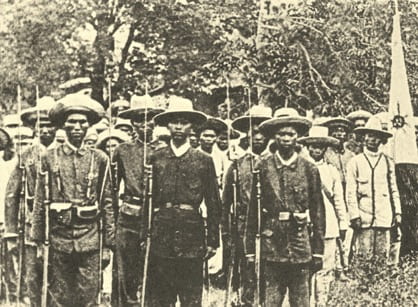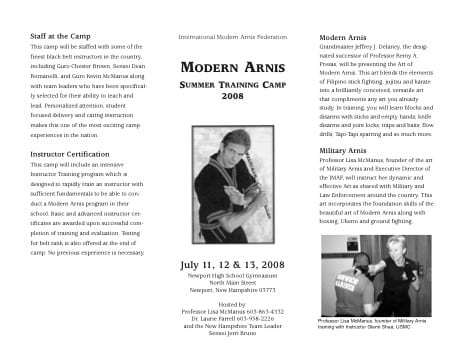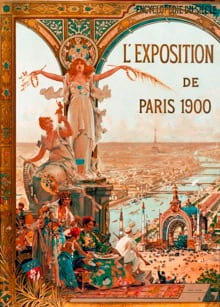By Contributing Editor AJ Hawks
I first started studying taekwondo when I was in high school, partially because of the movies (“Can he really do that?!”) and partially to please my Korean grandmother who had handed me a flier about Korean weaponry that was a tad on the intimidating side. My studio occasionally hosted seminars on a weaponry martial art called Modern Arnis, which I eventually decided to pursue. Serendipitously, Modern Arnis, an indigenous Filipino art, would unexpectedly intersect with my academic study of Muslim minority groups via the Moro Muslims in the Southern Philippines.
The academic study of the history of martial arts is underdeveloped. This is surprising if only because of martial arts’ deep cultural roots in a wide variety of societies around the globe. Here I want to specifically suggest that Modern Arnis offers a unique and critical framework by which to consider postcolonial theory.
“Arnis” refers to a variety of styles of martial arts that deal with the use of two rattan wood sticks called “escrima” as well as a variety of Southeast Asian machetes. It formed as a blend of “systems from all over the world: Thailand, China, Spain, Indonesia, Japan and India [that] reached the islands as the people of the Philippines interacted, traded and fought with these diverse nations” (Horwitz).

When the Spanish occupied the Philippines, they banned the study of these martial arts (then called Kali among other things) with one exception. They allowed fights between Filipino Moros for Spanish entertainment and dressed fighters in ceremonial Spanish armor (the old Spanish word for armor being “Arnes”) (Wiley). Before the Spanish, Arnis was largely practiced by peasants (a divide further underscored by its association with the Muslims of the Philippines).

Katipuneros, members of Katipunan, an anti-Spanish revolutionary society in the Philippines
The tradition of stage fights among Moros were continued under American occupation with less emphasis on the “clash of religions”, instead intended to shore up a distinct American vision of the Moros. Indeed, Hawkins has argued persuasively in his work “Making Moros” that the present significance of the term was actually forged under American occupation of the Philippines after the Spanish-American War.
The Americans were committed relatively early to two things: (1) They wanted a unified Filipino government that eventually could manage independence and (2) they wanted to incorporate the highly resistant “Moros” into Western civilization. The American government, like the Spaniards before them, put great effort into suppressing Moro attempts at rebellion- much of which has been glossed over in the popular memory (Gowing, 325). Oddly enough, however, the US also displayed an almost romantic affinity for the rebellious Moros (Hawkins, 125). As such, they put great efforts into romanticizing Moro wildness which they saw as analogous to the untamed West. Americans created exhibitions similar to the exhibitions under the Spanish without the explicitly religious flavor. They were intended to showcase “Moro culture” and in particular their status as “brave and ferocious fighters… Most Filipino Muslims gladly accepted opportunities to reaffirm narratives of Moro gallantry and autonomous ethno-religious identities” (Hawkins, 47). And what was being used for this purpose? Yet again, the martial art broadly described by the term Arnis.
Early on, then, this singular population began to embrace their place in American narratives. They also held highly publicized carnivalesque shows intended to establish a particular narrative about the US-Moro relationship, central to this being the United States’ preeminence and Moro potential. Hawkins spends time discussing at length Moro efforts to “reorient and appropriate discourses and symbols of imperial control” (incidentally, this offers an interesting parallel with Catholics in the North resisting the Spanish) (Hawkins, 71). Thus, long before any particular social movement organization came onto the scene, there were conscious efforts by local leaders to develop a particular narrative about the Moro people and their aims, efforts which continued to include the practice and performance of Arnis.

Modern Arnis was developed by the now world-famous Grand Master Remy Presas. Presas was trained in a local variety of Arnis by his father Jose Presas. According to his interview with Black Belt Magazine, “Presas refined and blended the important aspects of tjakele, arnis de mano, karate, jujitsu and dumog into the art he named modern arnis” (Horwitz). Presas indicated that he wanted to unify these arts to help the “diverse systems of [his] country… feel the connection” (Horwitz). He also explicitly chose the term “arnis” over others such as “kali”, arguing that with other terms, “not many people in the Philippines will know what you are talking about. Arnis best reflects the Philippine culture because it is a Tagalog word” (Horwitz). His efforts in the Philippines were immensely successful, and in 1975 he was sent on a “good-will tour sponsored by [the Filipino] government to spread information about modern arnis techniques around the globe” (Horwitz). Thus, at each of these stages of development in Arnis history, we see an intentionality by practitioners to take advantage of Western interest and preserve their sense of local identity. It’s also worth noting that much of the history of Arnis is recited orally in the martial arts studio. Like other martial arts, the sense of cultural belonging and history is considered an important part of becoming a practitioner and eventually a master.

As the United States was following the Spanish imperial tradition of hosting Moro cultural demonstrations, something similar was happening on the other side of the world: the French imperial exhibitions. Zeynep Çelik and Leila Kinney offer a probing look at the mechanisms behind the “enactment of the eroticized mystique of the Orient, the belly dance… a myth of Islamic culture” (Celik and Kinney, 286). They argue that the expositions’ planning principles were designed to demonstrate French material superiority and “enhance supremacy through representation” (Celik and Kinney, 290). Moreover, these displays interacted with French class relations in the press and “elaborated and promoted fantasies about working-class women” (Celik and Kinney, 300). In short, the French constructed exhibitions to create the image of a coherent “orient”, one that underscored French superiority and interacted with the local French cultural context to reinforce class distinctions. In sustaining this imagined oriental other, imperialism was justified.
It seems logical, then, to consider martial arts in a way similar to imperial exhibitions. And yet, the study of these exhibitions has not substantially been connected to the history of martial arts. This is likely tied to the simple facts that many East Asian societies (highly associated with martial arts) did not experience formal colonialism and because orientalism proper has a strong geographical referent (Burke and Prochaska, 42). Nonetheless the general mode of approaching “othering” discourses has been shown by scholars to be helpful in understanding cultural representation in East Asia (Dirlik). And more critically, the Philippines did experience formal colonialism.
Thinking about the history of the Filipino martial arts, and Arnis specifically, in this way suggests two things. First, it situates the Western consumption of martial arts in a broader imperial cultural framework, much like belly dancing. Unlike belly dancing, as already pointed out, many cultural groups that are considered originators of martial arts never experienced colonization to any degree remotely similar to other parts of the world. Thus, it might make more sense to see the cultural imperialism of the martial arts as an incomplete project. Martial arts’ widely known multiplicity of origin sources and broad acceptance in a variety of social and class contexts made it far more resistant to simplified appropriation.
Second, Arnis illustrates a case where the colonized voice broke through. While it is true that the Spanish (and eventually Americans) tried to utilize Arnis in their imperial narratives, it is also true that Filipinos were willing and able to use this platform to protect a substantial portion of indigenous culture under the guise of preparing for exhibitions. Eventually they, knowingly or otherwise, were able to tap into Western exoticism to continue to propagate traditions, oral histories, and a sense of self not directly beholden to imperial narratives.
In the context of critical theory and subaltern studies, Spivak posed a now famous epistemic question:
Let us now move to consider the margins of the circuit marked out by this epistemic violence, men and women among the illiterate peasantry, the tribals, the lowest strata of the urban subproletariat… We must now confront the following question: on the other side of the international division of labor from socialized capital, inside and outside the circuit of the epistemic violence of imperialist law and education supplementing an earlier economic text, can the subaltern speak?
Spivak’s answer was no. But in considering martial arts as a sort of historical knowledge, I wonder if the answer should be a highly qualified “yes” or at least “in part”. While it is true that imperial power used martial arts to their own ends, it is also true that practitioners were able to take advantage of this and preserve at least some of their artistic integrity and frame their historic experience through oral and physical training in a way that is still passed on today. Moreover, many if not most of the practitioners throughout Spanish and American rule in the Philippines were in fact of the “peasantry, the tribals, the lowest strata of the urban subproletariat”. Perhaps ironically, one of the few voices that were protected in this colonial context were the subaltern. Sadly, adequately addressing the history of women in the martial arts will have to wait for another article.



Leave a Reply